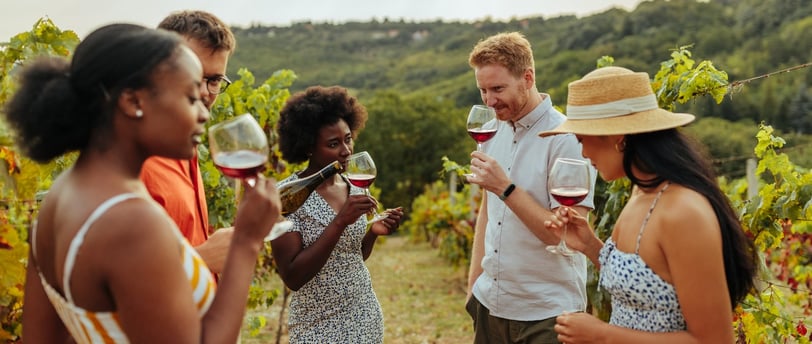WINE IS 80% MARKETING
Why do alcohol consumers still prefer beer over wine?


Exactly, and I’ll say it loud and clear: eighty percent of the wine industry is marketing.
This is an absolutely fragmented industry, where we’re all selling a delicious alcoholic liquid —setting aside differences in quality and production process— to an average consumer who, right now, doesn’t really know how to distinguish or understand the subtleties of winemaking or tasting.
And here we’re talking about results, not personal opinions: wine consumption dropped 3.3% year-over-year between 2023 and 2024, continuing a steep decline since 2017, according to the latest report from the International Organisation of Vine and Wine.
The question is:
Why do alcohol consumers still prefer beer over wine?
And I think we all have a fairly intuitive answer to that.
Trends aside, the average visitor to a winery is not an expert in oenology, wine tasting, or viticulture. Most of them are far more excited about sipping something tasty and enjoying a beautiful view than about connecting with the wild yeasts carried by the breezes of the Valley we’re trying to evoke.
Some of these new clients just want to have a good time, drink a glass, and head to the next winery.
So how do we connect with that customer — the one who has a slight interest in wine but, when I repeatedly ask:
“Do you know anything about the production process?” or “Do you prefer sweet or dry wines?”
— gives a timid answer that aligns with my expectations, but deep down just wants to enjoy their drink without exposing their lack of technical knowledge?
That’s where I blame the snobbery we've built around the industry.
This notion that the sommelier exists only to serve the seasoned aficionado, a connoisseur of premium wines.
Or that the wine seller is some sort of priest — the sole figure capable of interpreting a glass and translating its meaning.
Of course, excluding the die-hard wine lovers, we still see that entry-level consumers are shy, afraid of saying something “wrong,” when —let’s be honest— our product is fermented grape juice.
It shouldn’t feel so unreachable.
Back to the point:
Marketing teams need to bring concepts and values down to earth, and work hand in hand with sales teams to design brochures and strategies that connect with consumers in a simple, friendly way.
Because the wine may be spectacular, but if we don’t communicate it clearly and confidently, we’ll keep losing ground… trying to compete with beer.
More and more wineries are trying to communicate their organic practices, waste reduction, or by-product reuse…
but very few are doing so from the real perspective of the consumer — the one who doesn’t know what “malolactic fermentation” means.
Let’s rethink the opportunity to embrace screw caps — and I don’t just mean literally.
Let’s make access to the liquid less dependent on complex mechanisms that, more often than not, overwhelm the person who simply wants a drink.
And let’s not forget that the first step toward sustainability is being economically stable and financially transparent.
Let’s use marketing to our advantage, with sharp sales teams that make active selling easier, and build a community of customers who —even if they don’t (yet) understand the flotation process or the decision not to filter or clarify—
still enjoy the daily joy of tasting new wines with bold identities and innovative profiles that offer a defined, approachable experience on the palate.
Thanks for making it to the end of this new edition.
Salud!